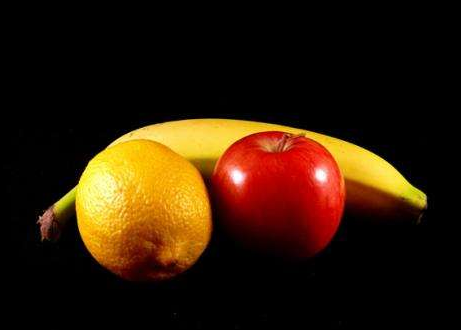NEJM:多吃新鲜水果 中风和心脏病远离你
时间:2016-04-08 10:50:43
来源:生物谷

图片来源:medicalxpress.com
近日,刊登于New England Journal of Medicine上的一项研究论文中,来自牛津大学和中国医学科学院的研究人员通过联合研究发现,相比很少吃新鲜水果的个体而言,经常摄入新鲜水果的个体或患心脏病发作和中风的风险较低。
相比于其它国家,比如英国和美国而言中国人群新鲜水果的摄入水平相对较低。文章中研究人员对来自中国10个城市和农村地区的50万成年人群进行了长达7年的研究,这些个体在参加研究时并没有心血管疾病或抗高血压疗法的历史。
水果中富含钾、膳食纤维、抗氧化剂以及多种潜在的活性物质,同时水果中的钠、脂肪和能量水平相对较低,研究结果表明,水果的消耗(主要为苹果和桔子)和许多其它因素具有强烈的关联性,比如教育水平、低血压、低血糖、不吸烟等等,每天摄入100g水果会降低个体三分之一的心血管疾病死亡率。
研究者Huaidong Du说道,水果摄入和心血管疾病风险之间的关联性在中国表现尤为明显,甚至在有些地区人们很少摄入水果,而在高收入的国家里人们每天摄入水果的现象非常常见,此外中国的水果很多都是生吃的,而在高收入的国家里这些水果都是被加工处理的。中国医学科学院的研究者Liming Li指出,最近一项关于全球疾病负担的报告指出,在中国低水平的水果消耗是引发早产儿死亡的主要原因,然而该理论在中国自身看来缺乏一定证据。
最后研究人员Zhengming Chen说道,目前我们很难知道是否较多摄入新鲜水果的个体的较低疾病风险是因为这些水果产生了真正的保护效应,如果真是这样的话,那么在中国人群中新鲜水果的普遍摄入或许每年就可以抑制50万人因心血管疾病而死亡,这些人群包括70岁以下的20万人,以及非致死性的中风患者和心脏病发作患者。(生物谷Bioon.com)
Fresh Fruit Consumption and Major Cardiovascular Disease in China
Huaidong Du, Ph.D., Liming Li, M.D., M.P.H., Derrick Bennett, Ph.D., Yu Guo, M.Sc., Timothy J. Key, D.Phil., Zheng Bian, M.Sc., Paul Sherliker, B.A., Haiyan Gao, Ph.D., Yiping Chen, D.Phil., Ling Yang, Ph.D., Junshi Chen, M.D., Shanqing Wang, Ph.D., Ranran Du, B.A., Hua Su, M.D., M.P.H., Rory Collins, F.Med.Sci., F.R.C.P.(E.), Richard Peto, F.R.S., and Zhengming Chen, D.Phil., for the China Kadoorie Biobank Study
BACKGROUND In Western populations, a higher level of fruit consumption has been associated with a lower risk of cardiovascular disease, but little is known about such associations in China, where the consumption level is low and rates of stroke are high. METHODS Between 2004 and 2008, we recruited 512,891 adults, 30 to 79 years of age, from 10 diverse localities in China. During 3.2 million person-years of follow-up, 5173 deaths from cardiovascular disease, 2551 incident major coronary events (fatal or nonfatal), 14,579 ischemic strokes, and 3523 intracerebral hemorrhages were recorded among the 451,665 participants who did not have a history of cardiovascular disease or antihypertensive treatments at baseline. Cox regression yielded adjusted hazard ratios relating fresh fruit consumption to disease rates. RESULTS Overall, 18.0% of participants reported consuming fresh fruit daily. As compared with participants who never or rarely consumed fresh fruit (the “nonconsumption” category), those who ate fresh fruit daily had lower systolic blood pressure (by 4.0 mm Hg) and blood glucose levels (by 0.5 mmol per liter [9.0 mg per deciliter]) (P<0.001 for trend for both comparisons). The adjusted hazard ratios for daily consumption versus nonconsumption were 0.60 (95% confidence interval [CI], 0.54 to 0.67) for cardiovascular death, and 0.66 (95% CI, 0.58 to 0.75), 0.75 (95% CI, 0.72 to 0.79), and 0.64 (95% CI, 0.56 to 0.74), respectively, for incident major coronary events, ischemic stroke, and hemorrhagic stroke. There was a strong log-linear dose–response relationship between the incidence of each outcome and the amount of fresh fruit consumed. These associations were similar across the 10 study regions and in subgroups of participants defined by baseline characteristics. CONCLUSIONS Among Chinese adults, a higher level of fruit consumption was associated with lower blood pressure and blood glucose levels and, largely independent of these and other dietary and nondietary factors, with significantly lower risks of major cardiovascular diseases. (Funded by the Wellcome Trust and others.).



